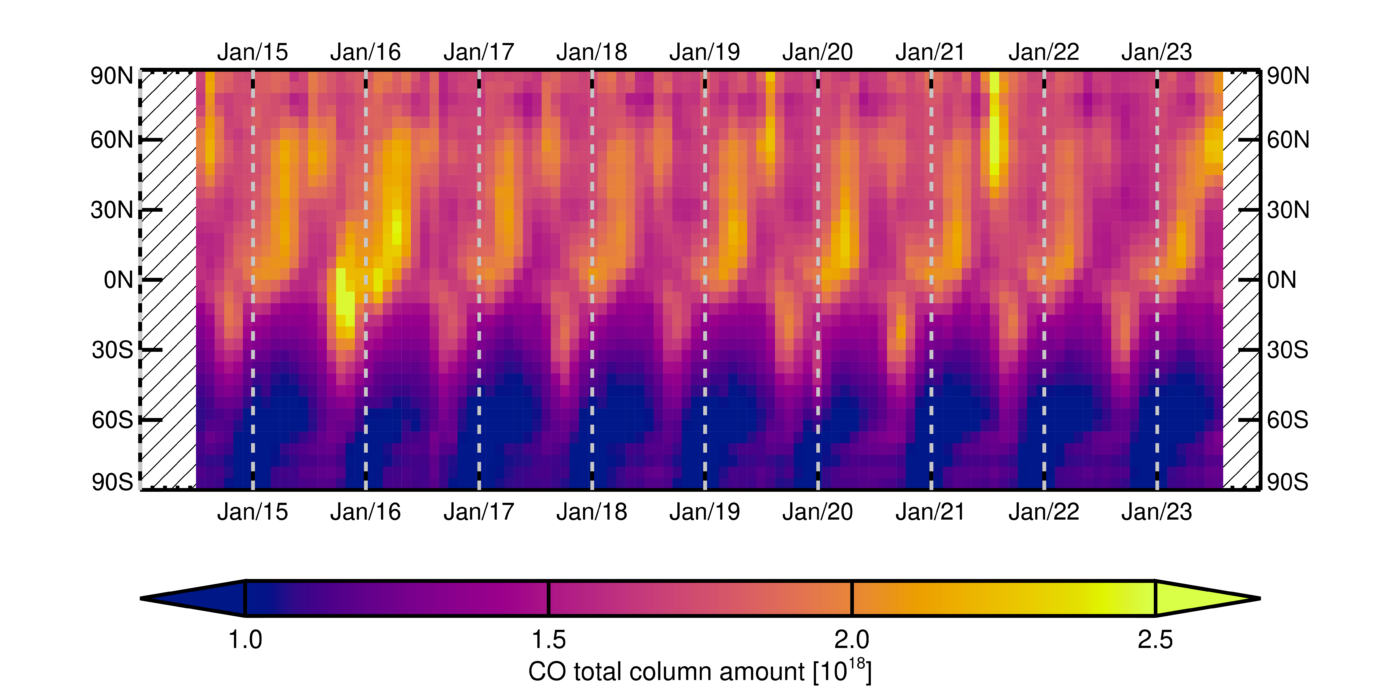
Anthropogenic methane emissions
Monitoring human-caused emissions of methane, a significant greenhouse gas, is vital if we are to successfully reduce our influence on the Earth’s climate. A combination of long-term and novel satellite-based observations allow us to locate, quantify and potentially mitigate these anthropogenic emissions.
Methane is a powerful greenhouse gas emitted to the atmosphere via human-related activity and natural sources. It warms the Earth’s climate around 80 times more powerfully than carbon dioxide, although it remains in the atmosphere for a much shorter time (around 10 years). Mitigating anthropogenic methane emissions could therefore quickly reduce humanity’s influence on the climate.

Anthropogenic sources of methane include:
- Fossil fuels – activity linked to the extraction, transport and storage of most fossil fuels regularly leaks methane to the atmosphere.
- Agriculture – cattle and other farmed ruminants emit methane, as does the cultivation of rice crops.
- Waste – the decay of organic matter within waste sites can lead to methane emissions.
- Fires – fires in forests and other biospheres, often caused by human activity, release methane to the atmosphere.
Combined, these anthropogenic sources release more than 350 million tonnes of methane to the atmosphere every year, approximately 60% of total emissions from all sources. Consequently, methane is responsible for around a third of the human influence on the planet’s increasing temperature.
Methane warms the Earth’s climate 80 times more powerfully than carbon dioxide, although it remains in the atmosphere for a much shorter time (around 10 years).
Across NCEO, we specialise in employing satellite-based instruments for:
- long-term monitoring of atmospheric methane concentration
- mapping and quantification of methane emissions
- differentiation of source types
Satellites instruments such as IASI, GOSAT and TROPOMI regularly and systematically monitor global methane concentrations, whilst newly developed high-resolution satellites (e.g. GHGSat, PRISMA) can be targeted to monitor emission point sources, such as gas leaks, power stations and coal mines.
At NCEO Leicester and NCEO RAL Space , we carry out retrieval and validation of global methane concentrations from satellites including GOSAT and IASI, providing decades-long records of changing methane concentrations in the atmosphere. Meanwhile, at NCEO Edinburgh and NCEO Leeds, atmospheric modellers use data assimilation and machine learning techniques to combine these satellite products with model simulations to map methane emissions across the globe.
Recent research
- NCEO scientists used IASI data to quantify the methane released from the Nord Stream pipeline leaks in 2022.
- NCEO collaboration with industry partners GHGSat to discover and mitigate a gas pipeline leak in the UK via satellite — for the first time — in 2023.
- We are establishing a national network of spectrometers, called GEMINI-UK, to help monitor methane and the UK’s progress towards net-zero carbon emissions.
Tools
The methane data is derived from measurements made by Low Earth Orbit satellites such as Infrared Atmospheric Sounding Interferometer (IASI) and the Greenhouse Gases Observing Satellite (GOSAT) using algorithms designed and produced at NCEO RAL and NCEO Leicester. Data from instruments onboard Sentinel-5P, GHGSat satellites and PRISMA satellites are also employed by NCEO scientists.
The GEOS-Chem and TOMCAT chemical transport models and their inverse versions are used at NCEO Edinburgh and NCEO Leeds, respectively
Contact
For further information contact Dr Chris Wilson, NCEO Research Scientist at the University of Leeds.

